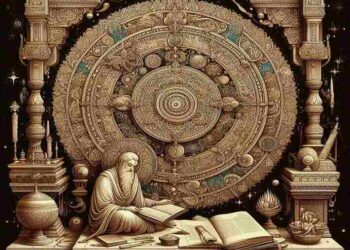Table of Contents
ToggleIntroduction
Top Historical Novels Transport You Back In Time In addition to being a huge early warning system, history is also a wealth of fascinating tales, vibrant people, and momentous occasions that still influence the present. Readers can experience the lives, hardships, and victories of people who lived in a different era and location through literature, particularly historical fiction.
Historical novels create vivid universes where readers can sense the pulse of history underneath the pages, going beyond just retelling dates, facts, and events. These novels offer us the opportunity to live, love, and even suffer with historical figures, making them more than merely instructional.
The best historical novels offer a deep sense of time and place, drawing readers into an entirely different world while making them feel as though they are living in that world. Whether through meticulously researched settings, vivid characters, or expertly woven narratives that blend fact with fiction, these novels transport us back in time, letting us experience history firsthand.
From ancient civilizations to wartime struggles, from royal courts to revolutionary uprisings, historical fiction opens up new perspectives on the past, providing both entertainment and education.
1. “The Book Thief” by Markus Zusak
Markus Zusak’s The Book Thief is an outstanding piece of historical fiction that takes place in Nazi Germany during World War II. The book follows Liesel Meminger, a young girl who steals books to share with others during a period of severe censorship and repression, and is told from Death’s point of view, which gives it a distinctive viewpoint. With the atrocities of the Holocaust and the ongoing prospect of war as a backdrop, Liesel’s connection with her foster parents and the other individuals in her life becomes increasingly complicated as she gets older.
History is brought to life in a moving and terrifying way by Zusak’s realistic depiction of life in wartime Germany, from the terror of air raids to the dehumanizing consequences of conflict. In addition, the book offers a reflection on the strength of narrative, language, and interpersonal relationships during the most trying situations. The tragedy, grief, and fleeting moments of optimism that characterized 1939–1943 Germany are experienced by readers as they are transported to that time period.
The Book Thief is widely regarded as one of the most moving historical novels of the 21st century. Its ability to blend the personal with the historical makes it not only an emotional read but also a reflection on the resilience of the human spirit in the face of tyranny.

2. “All the Light We Cannot See” by Anthony Doerr
Winner of the Pulitzer Prize for Fiction, All the Light We Cannot See by Anthony Doerr is another deeply moving World War II-era novel, though it explores the war from different vantage points. The novel follows two main characters: a blind French girl named Marie-Laure, who flees Paris with her father as the Nazis invade, and a German boy, Werner, who is recruited into the Hitler Youth and becomes a soldier.
Doerr’s writing is both lyrical and evocative, bringing the devastating effects of the war to life through the experiences of these two characters. The novel’s focus on the intersection of fate and survival provides a vivid depiction of wartime Europe. The two protagonists’ paths eventually cross, and the book captures the destruction of war, not just in terms of lives lost, but also in the way it scatters and disrupts human connections.
Set in a France under occupation and a Germany on the brink of collapse, All the Light We Cannot See transports readers to a world where light and dark, both literal and metaphorical, are constantly in tension. The novel’s themes of survival, memory, and the impact of war on everyday lives make it a timeless historical work.
Read more
3. “The Nightingale” by Kristin Hannah
Set in France during World War II, The Nightingale by Kristin Hannah follows the lives of two sisters, Vianne and Isabelle, who take very different paths during the Nazi occupation. Vianne is a mother and wife trying to protect her family as best as she can, while Isabelle, the younger and more rebellious sister, becomes a part of the French Resistance, risking her life to help downed Allied pilots escape Nazi forces.
Hannah’s novel is a beautiful exploration of love, sacrifice, and the resilience of women in the face of unimaginable adversity. The historical backdrop of Nazi-occupied France provides a devastatingly realistic setting for the sisters’ trials, and the book sheds light on the often-overlooked experiences of women during the war. The way the novel captures the terror of war, the quiet heroism of ordinary people, and the deep emotional struggles of its characters makes The Nightingale a powerful and unforgettable read.
Hannah’s exploration of the human spirit in wartime—especially from the perspective of women—offers readers a unique look at history and the impact of war on the home front. The novel’s portrayal of women’s roles in the war, from Resistance fighters to mothers and caregivers, has made it an essential work in historical fiction.
4. “The Pillars of the Earth” by Ken Follett
Set in 12th-century England during a time of political unrest, The Pillars of the Earth by Ken Follett is a sweeping historical epic that spans several decades. The novel centers around the building of a cathedral in the fictional town of Kingsbridge, intertwining the fates of several characters—from Tom Builder, the mason determined to build a grand cathedral, to Aliena, a noblewoman who is wronged by the system and rises from the ashes of her past to become a key figure in the town’s growth.
Follett’s meticulous research and attention to historical detail give readers a vivid picture of medieval life—both the grandeur of cathedrals and the grinding poverty of the peasantry. The novel delves into the political intrigue, power struggles, and religious conflicts of the time, all set against the backdrop of the building of a massive Gothic cathedral. It also highlights the roles of women in a male-dominated society and the ways in which personal ambition and collective effort shape history.
The Pillars of the Earth is an immersive experience, taking readers into the heart of medieval England and offering a panoramic view of the socio-political and religious upheavals of the period. For fans of historical fiction, it’s an epic journey that combines history, architecture, and human drama in one compelling narrative.
5. “The Red Tent” by Anita Diamant
In The Red Tent, Anita Diamant reimagines the biblical story of Dinah, the daughter of Jacob and Leah, offering a perspective on the ancient world that is seldom explored in religious texts. Set in the time of the patriarchs of the Bible, the novel delves into the lives of women in the ancient Near East, highlighting their strength, resilience, and solidarity as they navigate a world governed by men.
Through Dinah’s voice, Diamant explores the customs, rituals, and struggles of the women who lived in a time of deep social, religious, and familial bonds. The novel’s focus on the red tent—a place where women come together to give birth, mourn, and support one another—becomes a powerful symbol of female connection and empowerment in a patriarchal society.
The Red Tent transports readers to a time and place steeped in ancient tradition, giving them a glimpse into the intimate lives of biblical women and offering a different view of history. It has been praised for its feminist interpretation of the Bible, its emotional depth, and its rich historical detail.
Read more
6. “Wolf Hall” by Hilary Mantel
Hilary Mantel’s Wolf Hall is the first in a trilogy that explores the life of Thomas Cromwell, the ambitious and ruthless advisor to King Henry VIII. Set in 16th-century England, the novel takes readers inside the political and religious upheavals of the Tudor court, as Henry VIII navigates his desire for a male heir and his increasingly complicated relationship with his wives and the church.
What sets Wolf Hall apart is its focus on Cromwell, who is often portrayed in historical works as a villain. Mantel’s portrayal of him, however, is nuanced and complex, showing both his ruthless political maneuvering and his devotion to his family and ideals. Through Cromwell’s eyes, readers witness the turbulent reign of Henry VIII, the fall of Anne Boleyn, and the establishment of the Church of England.
Wolf Hall is a rich, atmospheric historical novel that brings the tumultuous reign of Henry VIII to life, and it’s filled with political intrigue, personal betrayal, and profound moral questions. Mantel’s writing is both elegant and immersive, making this a must-read for anyone interested in Tudor history or historical fiction in general.

Conclusion
Historical novels are more than just stories set in the past—they are journeys that take readers to different times, places, and cultures. From the battlefields of World War II to the courts of medieval England, these books provide a deeper understanding of history, allowing us to connect with the past in a way that is both emotional and intellectually enriching.
The novels listed above are among the best in the genre, offering richly detailed narratives and unforgettable characters that will transport you back in time, providing a fascinating glimpse into the lives of those who came before us. Whether you’re an aficionado of history or simply someone looking for an engaging read, historical fiction has something for everyone.
Read more
FAQ
1. What makes historical fiction stand out as a genre?
Historical fiction stands out because it combines factual events with fictional characters, providing a way for readers to experience history on a personal level. Through vivid storytelling and detailed settings, historical novels transport readers to different times and places, giving them a deeper understanding of the people and events that shaped the world.
2. How do historical novels stay true to the past while still being fictional?
While historical novels are based on real events, authors often take creative liberties in constructing their characters and storylines. The best historical fiction is rooted in accurate research but allows for fictionalized elements that enhance the emotional depth and narrative flow of the story.
3. Why do readers enjoy historical fiction?
Readers enjoy historical fiction because it offers an immersive experience that brings the past to life. It allows them to explore different cultures, time periods, and historical events while connecting with characters on an emotional level. It’s a way to learn about history in a more personal and engaging way.
4. Can historical novels be educational?
Yes, historical novels can be educational as they provide historical context, explore the nuances of different time periods, and highlight the lives of people who lived through major events. However, they are not intended to be dry textbooks; instead, they use narrative and character-driven stories to make history come alive.
5. What are some other historical fiction novels worth reading?
Other notable historical novels include The Help by Kathryn Stockett (set in 1960s Mississippi), Atonement by Ian McEwan (set during World War II), and The Tea Girl of Hummingbird Lane by Lisa See (set in China). Each of these novels offers a unique perspective on history and its impact on individual lives.
















